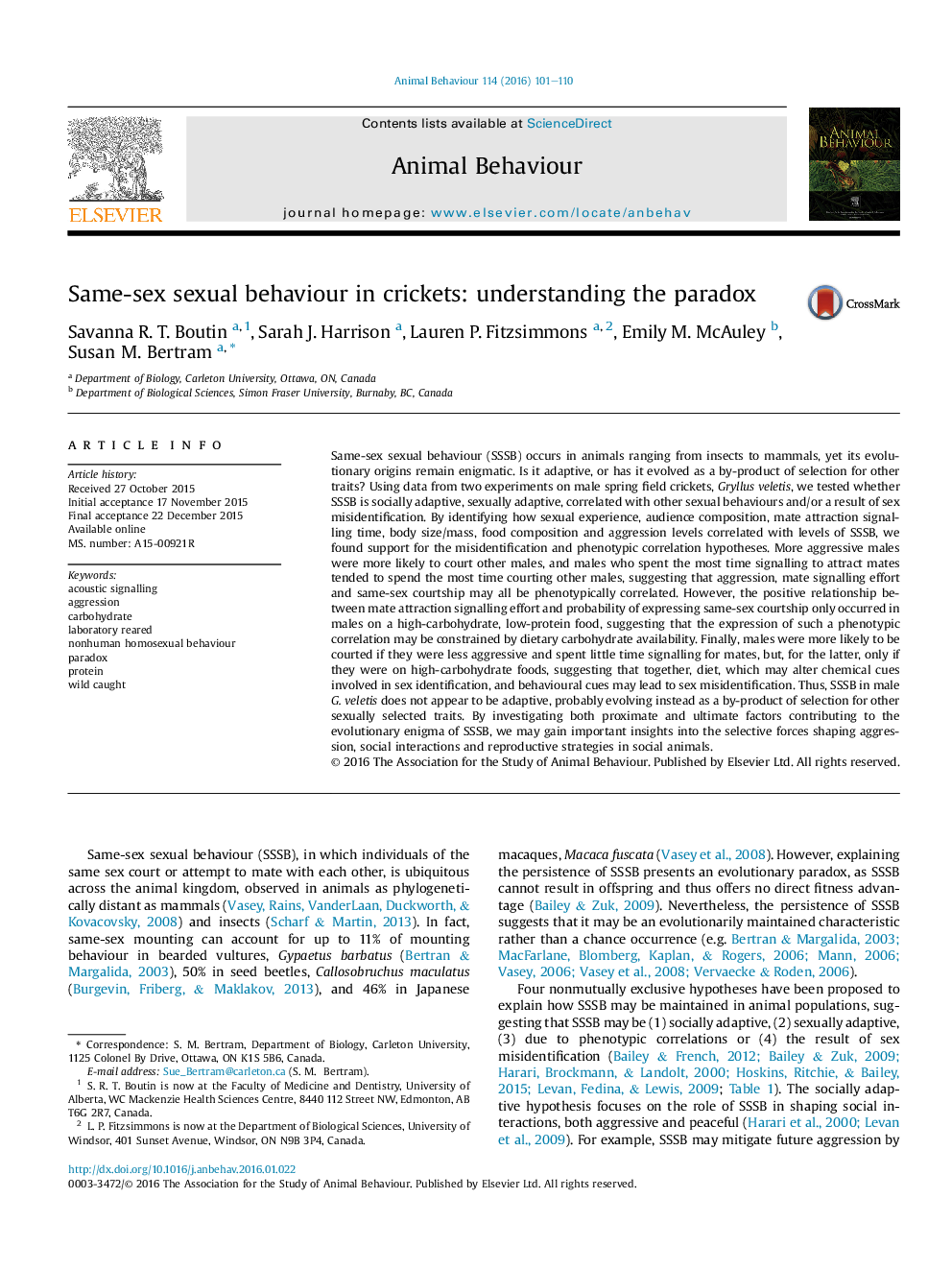| کد مقاله | کد نشریه | سال انتشار | مقاله انگلیسی | نسخه تمام متن |
|---|---|---|---|---|
| 8489180 | 1552214 | 2016 | 10 صفحه PDF | دانلود رایگان |
عنوان انگلیسی مقاله ISI
Same-sex sexual behaviour in crickets: understanding the paradox
ترجمه فارسی عنوان
رفتار جنسى یک جنس در کریکت: درک پارادوکس
دانلود مقاله + سفارش ترجمه
دانلود مقاله ISI انگلیسی
رایگان برای ایرانیان
کلمات کلیدی
سیگنالینگ صوتی تجاوز کربوهیدرات آزمایشگاه رشد کرد رفتار غیر انسانی همجنسگرایانه، پارادوکس، پروتئین، وحشی گرفتار،
موضوعات مرتبط
علوم زیستی و بیوفناوری
علوم کشاورزی و بیولوژیک
علوم دامی و جانورشناسی
چکیده انگلیسی
Same-sex sexual behaviour (SSSB) occurs in animals ranging from insects to mammals, yet its evolutionary origins remain enigmatic. Is it adaptive, or has it evolved as a by-product of selection for other traits? Using data from two experiments on male spring field crickets, Gryllus veletis, we tested whether SSSB is socially adaptive, sexually adaptive, correlated with other sexual behaviours and/or a result of sex misidentification. By identifying how sexual experience, audience composition, mate attraction signalling time, body size/mass, food composition and aggression levels correlated with levels of SSSB, we found support for the misidentification and phenotypic correlation hypotheses. More aggressive males were more likely to court other males, and males who spent the most time signalling to attract mates tended to spend the most time courting other males, suggesting that aggression, mate signalling effort and same-sex courtship may all be phenotypically correlated. However, the positive relationship between mate attraction signalling effort and probability of expressing same-sex courtship only occurred in males on a high-carbohydrate, low-protein food, suggesting that the expression of such a phenotypic correlation may be constrained by dietary carbohydrate availability. Finally, males were more likely to be courted if they were less aggressive and spent little time signalling for mates, but, for the latter, only if they were on high-carbohydrate foods, suggesting that together, diet, which may alter chemical cues involved in sex identification, and behavioural cues may lead to sex misidentification. Thus, SSSB in male G. veletis does not appear to be adaptive, probably evolving instead as a by-product of selection for other sexually selected traits. By investigating both proximate and ultimate factors contributing to the evolutionary enigma of SSSB, we may gain important insights into the selective forces shaping aggression, social interactions and reproductive strategies in social animals.
ناشر
Database: Elsevier - ScienceDirect (ساینس دایرکت)
Journal: Animal Behaviour - Volume 114, April 2016, Pages 101-110
Journal: Animal Behaviour - Volume 114, April 2016, Pages 101-110
نویسندگان
Savanna R.T. Boutin, Sarah J. Harrison, Lauren P. Fitzsimmons, Emily M. McAuley, Susan M. Bertram,
